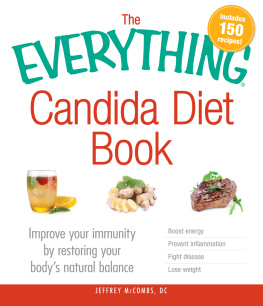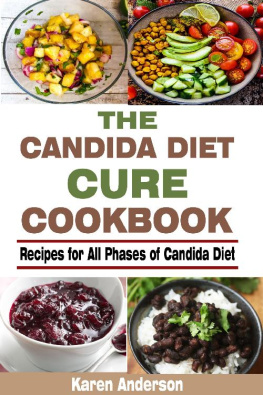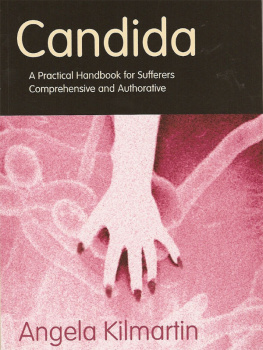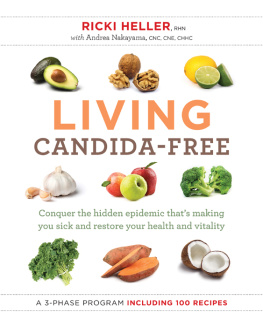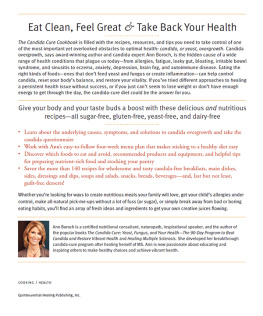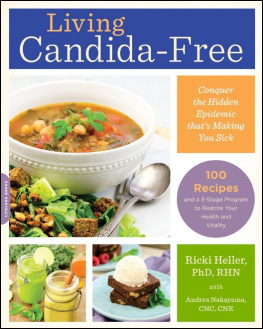
Copyright 2013 by Shasta Press, Berkeley, California
No part of this publication may be reproduced, stored in a retrieval system or transmitted in any form or by any means, electronic, mechanical, photocopying, recording, scanning or otherwise, except as permitted under Section 107 or 108 of the 1976
United States Copyright Act, without the prior written permission of the publisher. Requests to the publisher for permission should be addressed to the Permissions Department, Shasta Press, 918 Parker St., Suite A-12, Berkeley, CA 94710.
Limit of Liability/Disclaimer of Warranty: The publisher and the author make no representations or warranties with respect to the accuracy or completeness of the contents of this work and specifically disclaim all warranties, including without limitation warranties of fitness for a particular purpose. No warranty may be created or extended by sales or promotional materials. The advice and strategies contained herein may not be suitable for every situation. This work is sold with the understanding that the publisher is not engaged in rendering medical, legal or other professional advice or services. If professional assistance is required, the services of a competent professional person should be sought. Neither the publisher nor the author shall be liable for damages arising herefrom. The fact that an individual, organization or website is referred to in this work as a citation and/or potential source of further information does not mean that the author or the publisher endorses the information the individual, organization or website may provide or recommendations they/it may make. Further, readers should be aware that Internet websites listed in this work may have changed or disappeared between when this work was written and when it is read.
For general information on our other products and services or to obtain technical support, please contact our Customer Care Department within the United States at (866) 744-2665, or outside the United States at (510) 253-0500.
Shasta Press publishes its books in a variety of electronic and print formats. Some content that appears in print may not be available in electronic books, and vice versa.
TRADEMARKS: Shasta Press and the Shasta Press logo are trademarks or registered trademarks of Callisto Media Inc. and/or its affiliates, in the United States and other countries, and may not be used without written permission. All other trademarks are the property of their respective owners. Shasta Press is not associated with any product or vendor mentioned in this book.
ISBN: Print 978-1-62315-267-3 | eBook ISBN: 978-1-62315-309-0
Contents
Introduction
T his book is designed specifically for individuals who suffer from candida. As anyone who has been touched by candida knows, living with candida can change your life. The goal of this book is to help you change it again and take your health back.
Maybe you or someone close to you has been struggling with a variety of health problems for so long that you or that person has reached a breaking point. Maybe you dont even want to visit a doctor to describe your symptoms anymore, since you feel crazy trying to tell someone whats wrong. You arent alone.
Here you will find all the facts you need and sound reasoning for the candida cleanse and diet. You will also find easy, delicious recipes that will help you relieve the symptoms of candida. The candida cleanse is a strict regimen, but it will help you and those you love who suffer with candida cope with the most severe symptoms.
Once you understand the way candida works in your body, the cleanse will make so much sense to you. This book will take you far beyond the simple cleanse. The candida diet is a long-term plan for living candida-free, and when you see and taste how good your meals can be while you feel your health improve, you will have the strength to complete the cleanse and change your routine for good.
Here is how the meal program works. The plan is broken down day by day, each described in detail, Day 1 through Day 14. Each day includes breakfast, a midmorning snack, lunch, a midday snack, dinner, and even a dessert. You will never go hungry. Many of the listed recipes are included in this book; these are denoted with asterisks.
More important, though, the basic principles of eating to beat candida are the nuts and bolts of this book. This means that you will soon have the tools to shape your own menus and meal plans, giving yourself both the freedom to eat how you please and the right foods to maintain your health.
One final note as you begin. If ever you have a bad day and go off your cleanse, just like anything else worth doing, try, try again. Your reasons for doing this cleanse and attempting to change your diet arent just to lose a few pounds, for example. The improvement in your health that you can experience has the potential to be so much more profound.
Everyone makes a misstep here and there. If you do, dont beat yourself up. Just follow the tips provided here and you will have everything you need. In fact, keep your eyes peeled for little hints and tricks that will help youwhether youre soaring or struggling.
PART 1
Understanding Candida
WHAT IS CANDIDA?
I f you are reading this book, chances are you already have an idea of what candida is, because you live with some constellation of symptoms every day. Even so, it is important to understand exactly what it is, what causes it, and what range of ailments can fall under the name candida. Candida itself is a fungus, a genus of yeast. Candida albicans is the most common species seen in humans. Because it plays a crucial role in digestion and nutrient absorption, it occurs naturally in your body. Normal amounts of candida include a very small amount of it in your mouth and somewhat more in your intestines. Unfortunately, candida can be overproduced, and thats the problem that this book addresses. Candidiasis, also called thrush or a yeast infection, is an infection caused by candida. Candidiasis is also known to doctors as candidosis, moniliasis, and oidiomycosis. It is important to know that while candidiasis can be as simple as the thrush commonly seen in infants or the mild vaginal yeast infections seen in women, it can also be life-threatening. More serious infections are called candidemia, and usually they are seen in people who are severely immunocompromised, such as people with AIDS and cancer, or those healing from organ transplants and emergency surgeries.
Even milder cases of compromised immune systems allow candida to thrive more readily, however. For example, those with chronic fatigue syndrome (CFS)at least one million Americans, according to expertsare more susceptible to infections, including candida infections. There are also many other ways that people can become vulnerable to candida symptoms.
Candida requires moisture to thrive. In terms of vaginal and colonic growth, there are multiple risk factors. Some of these include use of douches and other detergents, hormonal fluctuations that disturb the normal vaginal flora (including pregnancy, hormone replacement therapy, infertility treatment, and use of birth control pills), use of antibiotics that also kill off healthy vaginal flora, diabetes mellitus, and even wearing wet swimwear for extended periods of time.
Diet is also linked to rates of candida growth. Specifically, diets high in simple carbohydrates are great for candida and bad for people who suffer from overgrowth of candida.
Traditional medical doctors generally diagnose candidiasis using microscopic examination, culturing, or both methods in tandem. Treatments generally include antifungal drugs, also known as antimycotics. The most commonly prescribed drugs are fluconazole (usually taken orally), and the topical drugs clotrimazole, ketoconazole, and nystatin. Unfortunately, candida can develop resistance to fluconazole, which is currently the most effective drug. For seriously ill patients who develop resistance, such as those with AIDS or candidal blood infections, intravenous drugs like caspofungin and amphotericin B are options. These drugs themselves have serious side effects, though, and can make their users feel very sick.
Next page

